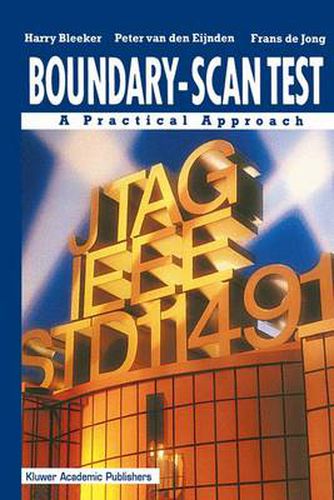Readings Newsletter
Become a Readings Member to make your shopping experience even easier.
Sign in or sign up for free!
You’re not far away from qualifying for FREE standard shipping within Australia
You’ve qualified for FREE standard shipping within Australia
The cart is loading…






This title is printed to order. This book may have been self-published. If so, we cannot guarantee the quality of the content. In the main most books will have gone through the editing process however some may not. We therefore suggest that you be aware of this before ordering this book. If in doubt check either the author or publisher’s details as we are unable to accept any returns unless they are faulty. Please contact us if you have any questions.
The ever-increasing miniaturization of digital electronic components is hampering the conventional testing of Printed Circuit Boards (PCBs) by means of bed-of-nails fixtures. Basically this is caused by the very high scale of integration of ICs, through which packages with hundreds of pins at very small pitches of down to a fraction of a millimetre, have become available. As a consequence the trace distances between the copper tracks on a printed circuit board cmne down to the same value. Not only the required small physical dimensions of the test nails have made conventional testing unfeasible, but also the complexity to provide test signals for the many hundreds of test nails has grown out of limits. Therefore a new board test methodology had to be invented. Following the evolution in the IC test technology. Boundary-Scan testing hm; become the new approach to PCB testing. By taking precautions in the design of the IC (design for testability), testing on PCB level can be simplified 10 a great extent. This condition has been essential for the success of the introduction of Boundary-Sc,m Test (BST) at board level.
$9.00 standard shipping within Australia
FREE standard shipping within Australia for orders over $100.00
Express & International shipping calculated at checkout
This title is printed to order. This book may have been self-published. If so, we cannot guarantee the quality of the content. In the main most books will have gone through the editing process however some may not. We therefore suggest that you be aware of this before ordering this book. If in doubt check either the author or publisher’s details as we are unable to accept any returns unless they are faulty. Please contact us if you have any questions.
The ever-increasing miniaturization of digital electronic components is hampering the conventional testing of Printed Circuit Boards (PCBs) by means of bed-of-nails fixtures. Basically this is caused by the very high scale of integration of ICs, through which packages with hundreds of pins at very small pitches of down to a fraction of a millimetre, have become available. As a consequence the trace distances between the copper tracks on a printed circuit board cmne down to the same value. Not only the required small physical dimensions of the test nails have made conventional testing unfeasible, but also the complexity to provide test signals for the many hundreds of test nails has grown out of limits. Therefore a new board test methodology had to be invented. Following the evolution in the IC test technology. Boundary-Scan testing hm; become the new approach to PCB testing. By taking precautions in the design of the IC (design for testability), testing on PCB level can be simplified 10 a great extent. This condition has been essential for the success of the introduction of Boundary-Sc,m Test (BST) at board level.